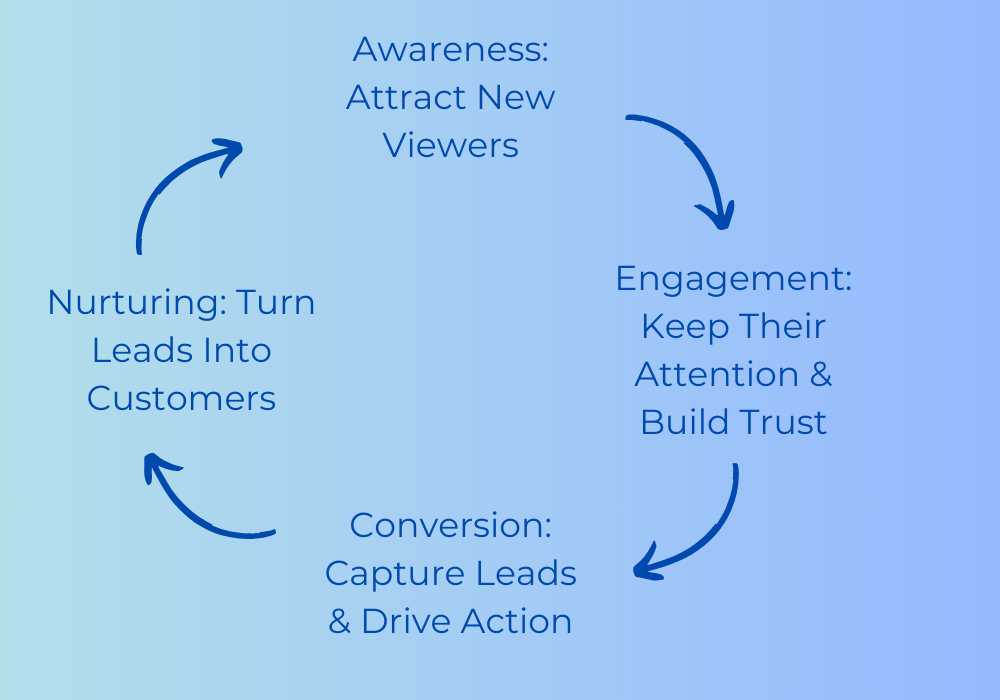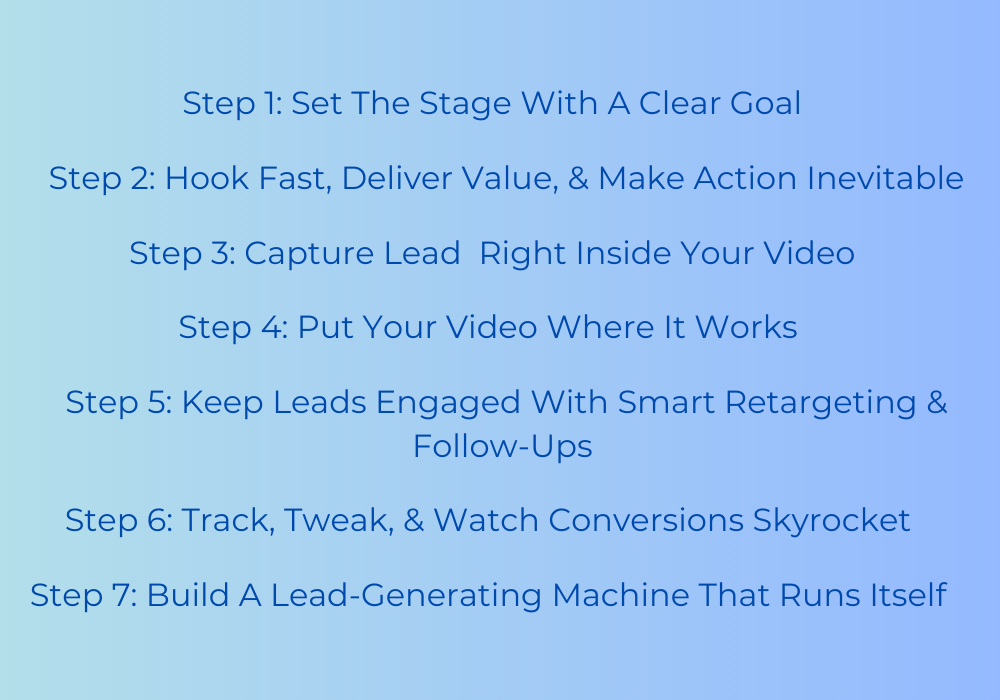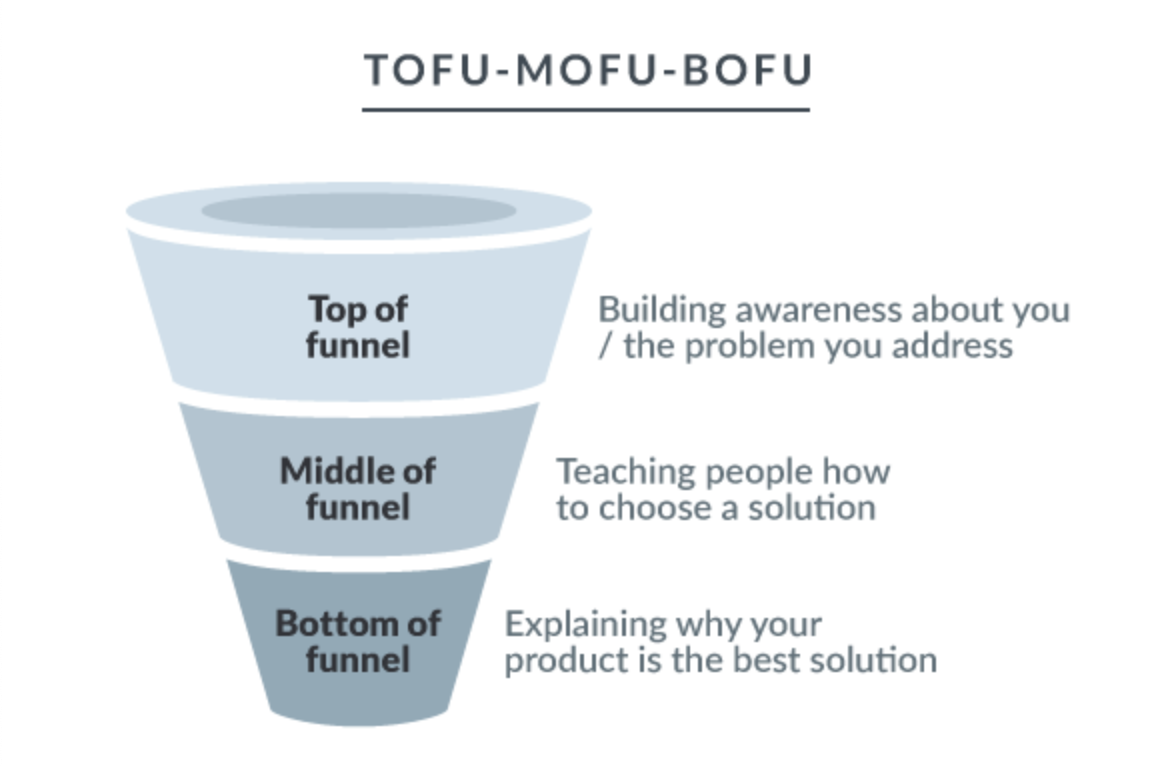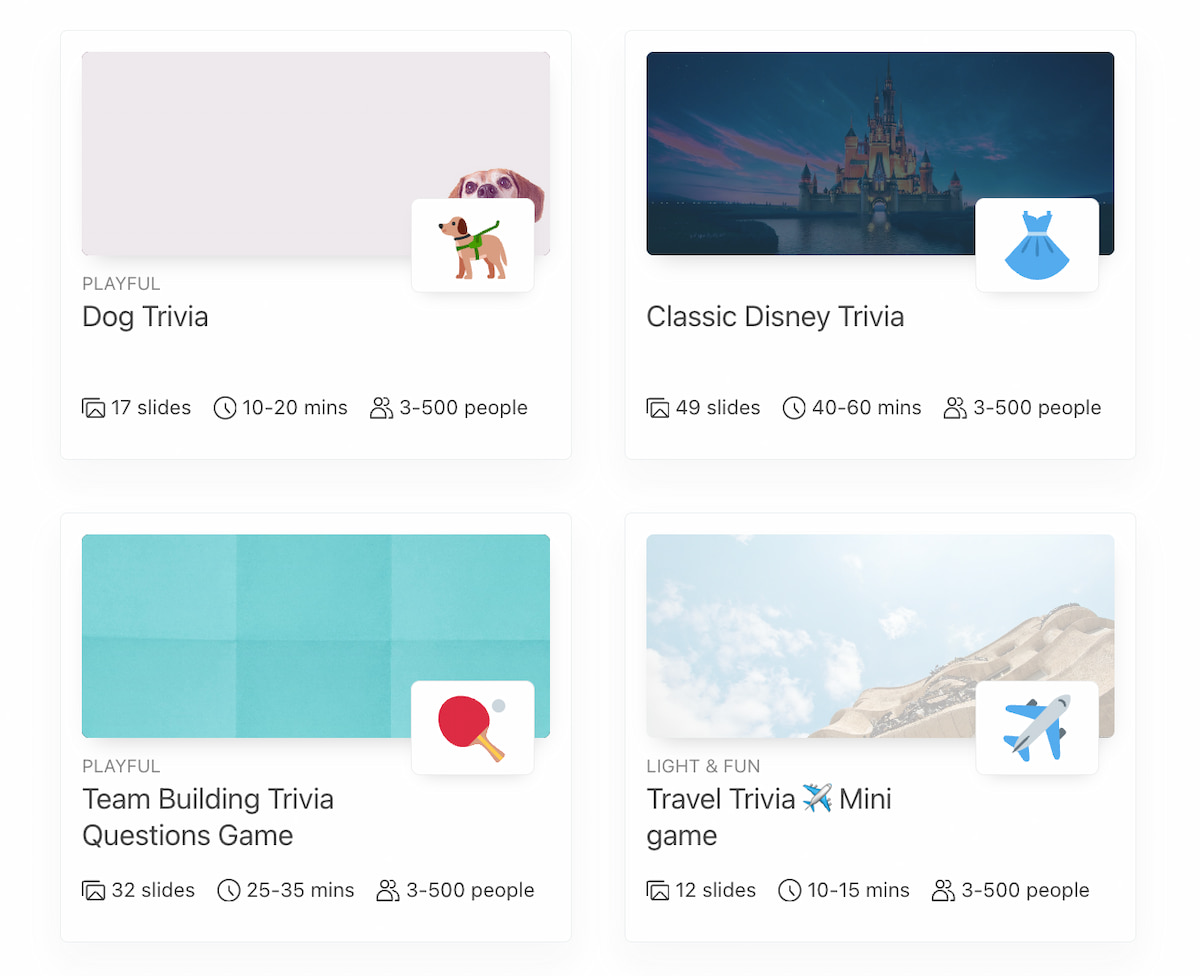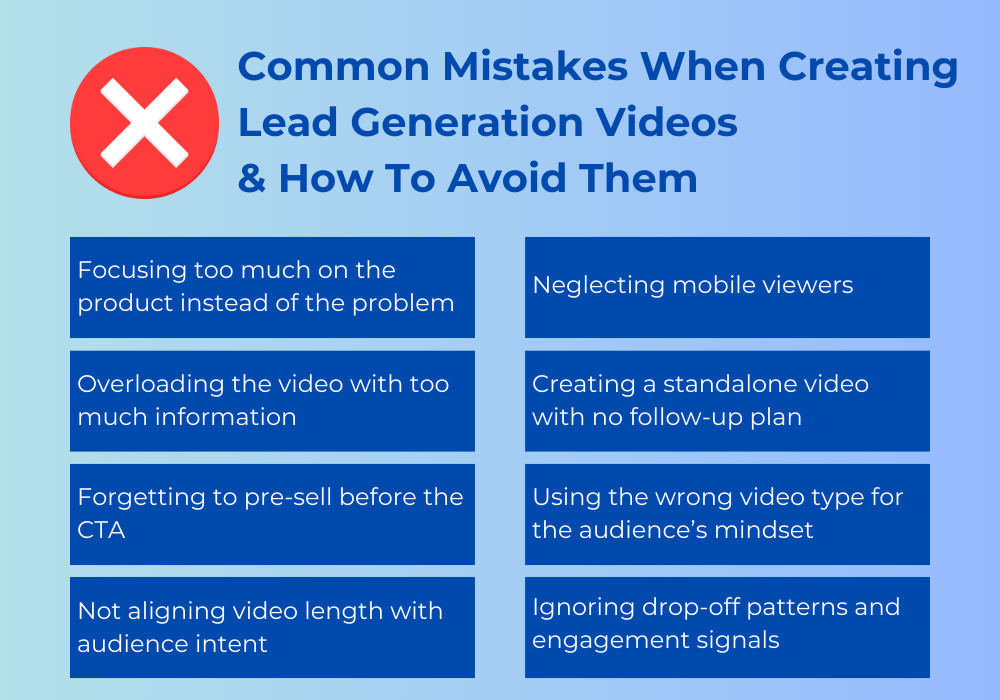Getting leads is hard. Getting leads that actually convert? Even harder. Without a strategy, your video content is just another view with no real results. This guide will show you what is video lead generation and how to use it to attract high-quality leads and turn them into paying customers. You will learn how to create, place, and optimize videos to attract leads and drive real conversions.
Let’s get right to it.
What Is Video Lead Generation & How Can You Use It to Attract More Leads?
Video lead generation means using video content to attract, engage, and capture potential customers. Instead of just getting views, your videos work as a lead magnet, collecting contact information and guiding prospects to conversion.
To attract more leads:
- Use explainer videos, testimonials, and product demos to build trust;
- Embed lead capture forms to collect emails directly within your video;
- Rank videos on YouTube and run targeted ads on Facebook, LinkedIn, and Instagram;
- Direct viewers to sign up, book a demo, or download a resource;
- Follow up with additional video content to keep them engaged and move them through your funnel.
6 Proven Video Types To Generate More Leads
Not all videos bring in leads. To get real results, you need the right video types that attract, engage, and convert your audience. Here’s how each one works:
| Type | Description | Best For |
| Explainer Videos | 60 to 90-second videos that break down a problem and show how your product or service solves it. | Website homepages, social media, and YouTube SEO. |
| Product Demos & Tutorials | Show your product in action to build trust and reduce hesitation. | Landing pages, email sequences, and retargeting ads. |
| Customer Testimonial Videos | Let happy customers sell for you by sharing their success stories. | Sales pages, LinkedIn, and email campaigns. |
| Live Webinars and Q&A Sessions | Engage potential leads in real time and answer their biggest questions. | B2B lead generation, LinkedIn, and email marketing. |
| Short-Form Social Media Videos | Capture attention quickly with bite-sized, engaging content. | TikTok, Instagram Reels, and YouTube Shorts. |
| Personalized Video Messages | Stand out in a crowded inbox by sending custom video follow-ups. | Cold outreach, post-webinar follow-ups, and sales prospecting. |
Understanding The Video Lead Generation Funnel’s Flow
Each stage of the funnel has a different goal and requires the right type of video to move people forward, here’s how it works.
Awareness (Attract New Viewer)
Your goal is to reach people who don’t know your brand yet and get them interested. Short, engaging videos like YouTube content, social media clips, or educational videos work best here.
Engagement (Keep Their Attention & Build Trust)
Once you have their interest, keep them engaged with videos that answer their questions or solve a problem. Explainer videos, product demos, and in-depth guides help them see value in your brand.
An AI video generator can help you quickly create these types of videos by turning scripts or text into engaging visual content. This not only saves time but also ensures a consistent flow of high-quality videos to keep your audience informed and interested.
Conversion (Capture Leads & Drive Action)
This is where you make engaged viewers take action. Use lead-gated webinars, free trials, or downloadable resources to capture emails. Place clear CTAs in your videos to guide them. But don’t forget to keep your email list clean to keep conversion rates high.
Nurturing (Turn Leads Into Customers)
Not all leads are ready to buy right away. Keep them engaged with follow-up videos, email sequences, and retargeting ads that push them tow a decision. This is where you use case studies, testimonials, and personalized video messages.
How To Turn Videos Into A Lead-Generating Machine: 7 Steps
As you go through each step, pay close attention to the exact action points you need to make.
Step 1: Set The Stage With A Clear Goal & A Powerful Video
Define the video’s precise role in your lead generation funnel. Are you attracting new leads, nurturing existing ones, or converting warm prospects? A top-of-funnel (TOFU) video should educate and generate interest, while a bottom-of-funnel (BOFU) video must push for direct action, like booking a call or signing up for a demo.
Here is what you need to do:
- Identify the funnel stage. Is the video for awareness, consideration, or conversion?
- Match the right video type. Work with content writers to create educational videos for TOFU, testimonials for MOFU, and demo videos for BOFU;
- Focus on one key pain point and how your solution solves it;
- Run TOFU videos on YouTube and social media, while BOFU on sales pages and email campaigns;
- Create a storyboard to break your scenes down properly, according to Pzaz, 86.3% of experts do so.
Step 2: Hook Fast, Deliver Value, & Make Action Inevitable
Viewers decide within the first 3–5 seconds whether to keep watching or scroll away. The hook must directly address their pain point or curiosity, so avoid generic intros. Once hooked, deliver value quickly, your video should leave them feeling like they’ve gained something, even if they don’t convert immediately.
Here is how you do it:
- Open with a problem or bold statement. For example: “97% of leads never convert, here’s how to fix that.”;
- Get to the point fast. Avoid long-winded intros; start with a compelling insight or quick-win solution;
- Keep motion and text on screen in the first few seconds to maintain attention;
- End with a direct CTA. “Click below to get your free guide” works better than “Learn more on our website.”;
- Gamify with trivias to make it more enticing to interact with;
- Research high-performing ads and learn about what elements make their videos work.
Step 3: Capture Leads Seamlessly Right Inside Your Video
If you rely solely on linking to a landing page, you’re losing leads. Instead, capture them inside the video with in-video lead forms, clickable CTAs, or even QR codes. Place a lead form while they are engaged before they start dropping off.
Soft gates (optional email entry) work well for TOFU videos, while hard gates (mandatory email to continue) are best for high-value webinars or case studies.
Here are the steps you need to take:
- Embed videos at the 10-15 second mark to capture engaged viewers;
- Use clickable CTA overlays. Guide viewers to take action without interrupting the video;
- Test soft vs hard gates. Let viewers watch part of the video before asking for an email, or require sign-up for exclusive content;
- Use QR codes for offline-to-online lead capture for events, printed materials, or YouTube descriptions.
Step 4: Put Your Video Where It Works & Let It Sell
A great video won’t generate leads if no one sees it or if it’s in the wrong place. The right platform, format, and placement make all the difference in how well your video attracts and converts leads. Also, your distribution strategy should match your audience’s behavior.
Here’s what you need to do:
- Use long-form videos for in-depth engagement. Use YouTube and landing pages for explainer videos, product demos, and webinars;
- Choose short-form videos to capture attention quickly. Use TikTok, Instagram Reels, Facebook, and LinkedIn for short, engaging content;
- Optimize YouTube videos for search. Use SEO-friendly titles, descriptions, and tags to improve discoverability;
- Embed videos above the fold on landing pages. Make sure visitors see the video without scrolling;
- Keep autoplay muted with captions enabled to prevent high bounce rates while making sure it’s accessible;
- Use testimonial videos in retargeting campaigns. Show warm leads how others succeeded using your solution;
- Create social media clips with compelling thumbnails and captions.
Step 5: Keep Leads Engaged With Smart Retargeting & Follow-Ups
Most people won’t convert after just one video, they need multiple touchpoints before making a decision. The key is to match your follow-ups to the viewer’s level of engagement. A cold lead who barely watched your video needs a different approach than a warm lead who clicked but didn’t submit their details.
Here are the steps:
- Retarget video viewers based on watch time. If someone watched 50% of your explainer video, retarget them with a testimonial video to build trust;
- Follow up with email sequences for high-intent actions. If a lead clicks your form but doesn’t submit it, send them a follow-up email highlighting key benefits;
- Send personalized video messages for warm leads. Use video emails to increase reply rates, especially for high-ticket sales;
- Re-engage drop-off viewers with reminder ads. If someone started watching but didn’t finish, show them a shorter recap video with a stronger CTA;
- Test different retargeting strategies. Show pricing videos to viewers who engage with testimonials and case studies to nudge them toward a decision.
Step 6: Track, Tweak, & Watch Conversions Skyrocket
If you are not tracking where leads drop off, which CTAs get clicks, and which videos generate the most conversions, you are flying blind. Small tweaks, like adjusting your hook, changing a thumbnail, or repositioning your CTA, will change the game for your videos. The key is to analyze viewer behavior and optimize based on real data, not guesswork.
Here are the steps you need to take:
- Use heatmaps to identify which parts of your video viewers skip, rewatch, or abandon;
- If over 30% of viewers leave within the first 5 seconds, refine your opening to grab attention faster;
- If less than 5% of viewers click your CTA, test different placements, wording, or visual elements to make them more compelling;
- A/B test thumbnails and video length. Use high-contrast thumbnails with bold text or an expressive face, and trim the first 5–10 seconds to get straight to the value;
- Compare conversion rates between video vs no-video pages. A strong-performing video page should convert at least 5-10%, while anything below 3% signals weak engagement. If your no-video page outperforms the video page, test moving the video higher, shortening its length, or replacing it with a text-based offer.
Step 7: Build A Lead-Generating Machine That Runs Itself
Once you find a video strategy that consistently brings in leads, focus on automating follow-ups and repurposing your top-performing content. Turn high-performing webinars into evergreen lead magnets, and short-form content should continuously drive traffic to your funnel.
Here’s what you need to do:
- Automate lead follow-ups. Set up AI-driven chatbots and email sequences to nurture leads without manual intervention;
- Repurpose long-form videos into short clips. Extract high-impact moments from webinars and reformat them into Instagram Reels, TikToks, and LinkedIn posts to drive more traffic into your funnel;
- Scale ad spend based on conversion rates. Increasethe budgetforn videos that maintain at least a 3-5% conversion rate, while pausing or tweaking underperforming ones;
- Create an evergreen video funnel. Turn high-converting webinars into on-demand replays that continuously generate leads. Ensure at least 30-40% watch completion rates to keep engagement strong;
- Refine distribution based on performance data. Identify which platforms and audiences generate the highest ROI and shift resources accordingly.
5 Real-Life Examples Of Video Lead Generation In Different Industries
Not every audience responds to the same kind of video. Some people need quick wins before they trust y, while others need proof that your solution works. Here’s how different industries use video to attract, engage, and convert leads. See what works for yours.
Pet Care & Veterinary Services: Helping Pet Owners Make Decisions
In the pet care space, families want to provide the highest quality of life for their furry friends especially when facing important health and wellness decisions like when managing chronic conditions or looking for expert guidance. Instead of pushing services directly, videos should educate, reassure, and provide a clear path to take.
- Awareness: A YouTube video called “How to Tell If Your Pet Needs Extra Care and Support” helps pet owners recognize signs their pet may need additional attention;
- Engagement: A vet-led Q&A video answers common concerns about senior pet care, pain management, and ways to improve comfort;
- Conversion: A gentle call-to-action invites pet owners to connect with a provider for a free consultation or expert guidance, connecting to a lead capture form;
- Nurturing: Follow-up emails include real pet owner stories, expert insights, and next-step guidance, helping them make informed, compassionate choices.
Guitar Tutorials: Giving Beginners A Quick Win To Keep Them Hooked
In the DIY learning space, learning a new instrument like a guitar is exciting at first, but most beginners quit because they feel stuck. If they don’t see progress fast, they won’t invest in lessons or courses like these.
- Awareness: A free YouTube tutorial called “Learn 3 Easy Guitar Riffs in 5 Minutes” hooks beginners by helping them play something fun immediately;
- Engagement: The video offers a free chord progression cheat sheet in exchange for an email;
- Conversion: After signing up, they get a follow-up video teaching them a full song, warming them up for the full course;
- Nurturing: A series of lesson preview videos and student success stories keeps them engaged until they are ready to buy.
Recreational Sports: Giving Players Personalized Recommendations
For many golf enthusiasts an enjoyable round isn’t just about their swing, it’s about having the right setup from tee to green. This is especially the case for golfers who rely on their cart for convenience and comfort efficiency on the course. The best video strategy? Show them how small cart upgrades like these can solve common frustrations and make every round easier.
- Awareness: A quick TikTok or Instagram video highlights frustrating moments on the course, like spilling drinks, losing gear, or dealing with rough terrain;
- Engagement: The video offers a checklist of must-have golf cart accessories to solve these issues, leading viewers to a guide or resource;
- Conversion: Leads who engage receive a personalized video on top accessory picks based on playing style, encouraging them to explore upgrades that fit their needs;
- Nurturing: Follow-up videos showcase real golfers benefiting from smart cart upgrades, reinforcing how simple changes can improve convenience and comfort on the course.
SEO Services: Making Business Owners Realize They Have a Problem
Most business owners don’t even realize their website has marketing issues like SEO needs. They just know they are not getting enough traffic. Before they look for a solution, they need to understand the problem and your video needs to make the issue obvious and offer an easy first step.
- Awareness: A LinkedIn video called “3 SEO Mistakes That Are Killing Your Website Traffic” catches their attention;
- Engagement: The video offers a free SEO audit, leading to a lead capture form;
- Conversion: After signing up, they get a personalized video breakdown of their site’s SEO issues;
- Nurturing: A series of case study videos shows how other businesses fixed their SEO and boosted their rankings.
B2B Businesses: Showing Businesses How Bad Data Is Costing Them Money
In B2B, decisions are made based on facts, numbers, and ROI, not emotions. If a company doesn’t see how bad data is hurting them, they won’t feel the urgency to fix it. The best approach? Use video to highlight the financial impact and offer a low-risk way to try the solution.
- Awareness: A LinkedIn ad repurposed from content like How Dirty Data Is Costing Your Business sparks curiosity and urgency;
- Engagement: The video offers a free checklist on cleaning up CRM data, leading to a lead capture page;
- Conversion: Leads who sign up get an interactive demo video showing how the tool automatically fixes data errors;
- Nurturing: Follow-up emails include customer success stories and a limited-time free trial offer to encourage sign-ups.
5 Video Lead Generation Best Practices
In a nutshell, you need to remember:
- Different audiences need different video types of content before they are ready to buy;
- If your product solves a frustration, show them a small win first;
- If they don’t realize they have a problem, use video to highlight it before offering a solution;
- Lead capture works best when paired with high-value content like tutorials, analysis, or exclusive resources;
- Follow-up videos keep leads engaged and remove doubts before they buy.
Common Mistakes When Creating Lead Generation Videos & How To Avoid Them
These little errors may not stand out at first, but they can quietly keep your video delivering the best results.
- Focusing too much on the product instead of the problem: People don’t care about features right away, they care about solutions. Open with the problem your audience faces before introducing your offer;
- Overloading the video with too much information: Trying to explain everything in one video overwhelms viewers. Keep it focused on one clear message and guide them to the next step;
- Forgetting to pre-sell before the CTA: A CTA without context feels abrupt. Warm up the audience first by highlighting a problem, sharing a quick win, or showing social proof before asking them to take action;
- Not aligning video length with audience intent: A cold audience won’t sit through a 10-minute explainer, and a warm lead might need more than 15 seconds. Match video length to where they are in the funnel, short for awareness, longer for consideration;
- Neglecting mobile viewers: If your video isn’t optimized for vertical or square formats, it won’t perform well on social media. Make sure it’s mobile-friendly with clear visuals and bold text;
- Creating a standalone video with no follow-up plan: A video without a follow-up strategy won’t drive consistent results. Plan a nurture sequence with retargeting ads, email follow-ups, or additional videos to guide leads toward conversion;
- Using the wrong video type for the audience’s mindset: A cold audience won’t respond to a hard sell, and warm leads don’t need basic educational content. Hook new viewers with value-driven content, reinforce trust with testimonials, and close with direct offers for those ready to convert;
- Ignoring drop-off patterns and engagement signals: If most viewers stop watching early or your CTA isn’t getting clicks, the problem isn’t just the video, it’s the experience. Look at watch time, audience retention graphs, and CTA interactions to pinpoint where engagement drops and adjust accordingly.
Conclusion
Most videos get watched, but few actually generate leads. The difference? Intentional strategy. A strong video doesn’t just tell a story. Creates a controlled journey, shaping how and when a viewer moves from passive interest to taking action.
The real advantage comes when your video doesn’t just generate engagement, but builds a pipeline of qualified leads that convert. If you’re ready to stop leaving conversions to chance, Kyleads gives you the tools to capture leads at the peak of engagement, effortlessly. Try it today.
